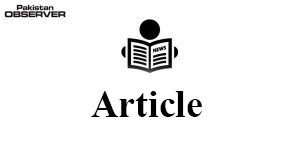Dr Sami Ullah
IF someone is unable to have physical and economicaccess to decent food for his family is considered as food insecure. There are direct and indirect impact of food insecurity on the social, mental and psychological health of the people of all ages. In Pakistan, 70 million people are food insecure based on expenditures approach for meeting the desired minimum calories intake. By disaggregating this number geographically, the percentage is similar for both rural and urban areas of Pakistan. Whereas, the highest number of food insecure people are found in Balochistan, followed by the KP, Sindh and the minimum number is from Punjab. These numbers have been estimated by using PSLM micro-data and minimum calorie approach was used for the threshold level by equalizing the numbers based on gender and age.
In Pakistan, almost half of the labour force is engaged in agriculture and contributing 20% in GDP. There is 68% agro-based industry and more than 70% people are dependence on agriculture for the livelihood, directly and indirectly. Pakistan is ranked on top 10 producers in 12 agriculture products and contributing to the foreign reserves alongside balance of trade. We have a very broad network of agriculture throughout the country where every region has its own specialization in this sector. In this situation, it become very tough to convince someone that we are food insecure by having the agriculture as the largest sector of the economy. Food security gained much attention in sustainable development goals (SDGs) adopted by members of United Nations in 2015 with its 17 goals, by focusing on poverty alleviation, peace, prosperity and protect the planet by 2030. Many of the goals are associated with food insecurity, the first goal of SDGs is to end poverty that is directly linked with the concept of food security. The second most important SDGs goal is to end hunger by 2030, and make sure the access to safe and nutritious food for all people, particularly poor and vulnerable. Even the leading goals of SDGs are ensuring healthy lives and well being of all the individuals, acheive gender equality, ensure the availabilty of water, are linked with the food security.
There are certain causes of food insecurity in Pakistan and the main cause is low value addition of the farmers. Per capita value addition of Pakistani farmer is just US$ 1800, whereas this number is US$ 97000 for Canada and US$ 125000 for Sweden. Secondly, low level of purchasing power is another contributing factor and evidence shows that GDP per capita of Pakistan is US$ 1500, in comparison of $ 69000 for US. Low level of awareness in terms of education can help the families regarding efficient and optimum utilization of resources. Unluckily, Pakistan has 25 million children out of school during their school going age and this number is second highest in the world. In the current scenario, no one can flourish and prosper without advanced usage of technology in every aspect of life. Technology can speed the process of information, communication, production and global access to the markets but we are lagging behind in this domain. Last aspect may be the imperfect market structure of agriculture products and there is no standardized pricing policy available for the protection of farmers. This sector is still facing a lot of structural issues and serious effort of the government is desired for the provision of food for more than 200 million masses.
Pakistan has a wide agriculture network and is producing all sorts of products including major crops, cash crops, vegetable, fruit, fishery and livestock. These products are unique in taste and could capture the global market by taking minor modifications in the existing system. We have the capability to expand agriculture exports after feeding the 200 million masses. Pakistan is known as young country with 60% of the people are below the age of 30 years and this sector can enhance employability of the youth in both rural and urban areas. We have the potential to grow with agriculture and even the demand of such products is very stable from last many years. There is dire need to prioritize this sector at national and international level by launching some policy decisions for market perfections and price mechanisms. Farmers are highly vulnerable and crop insurance may be the priority area. Government may develop rural non-farm sector for the sustainability of rural development and also provide inclusive living opportunities for the attraction of capable professionals. Rural development is prerequisite for technology adaption, productivity expansion and skill development of the farmers. If government can initiate such sort of steps, our agricultural products have the capacity to compete globally. Development of this sector can break the vicious cycle of deprivation and help the economic sustainability of Pakistan.
— The writer is Assistant Professor in Economics, University of Gujrat, Pakistan.










